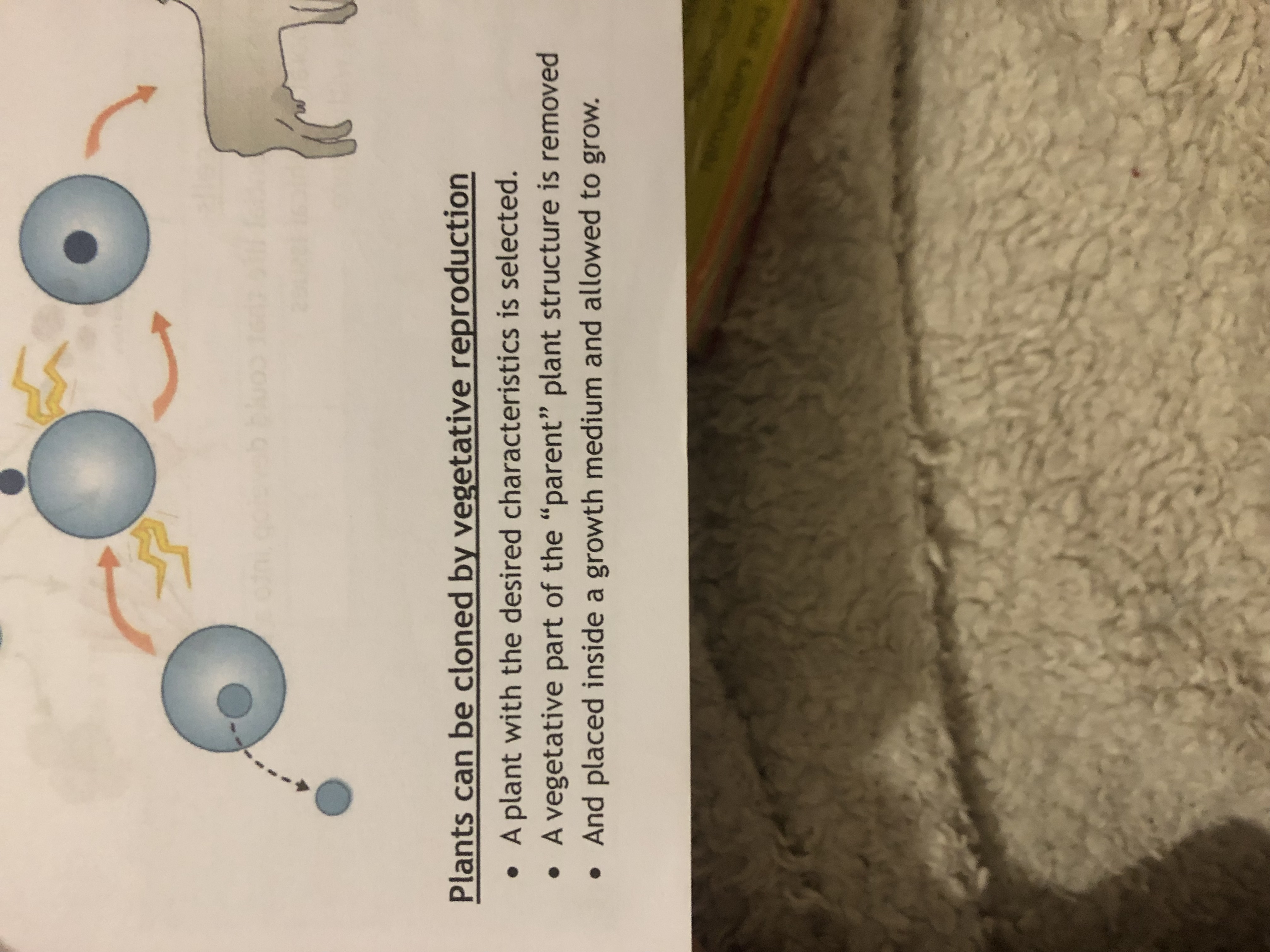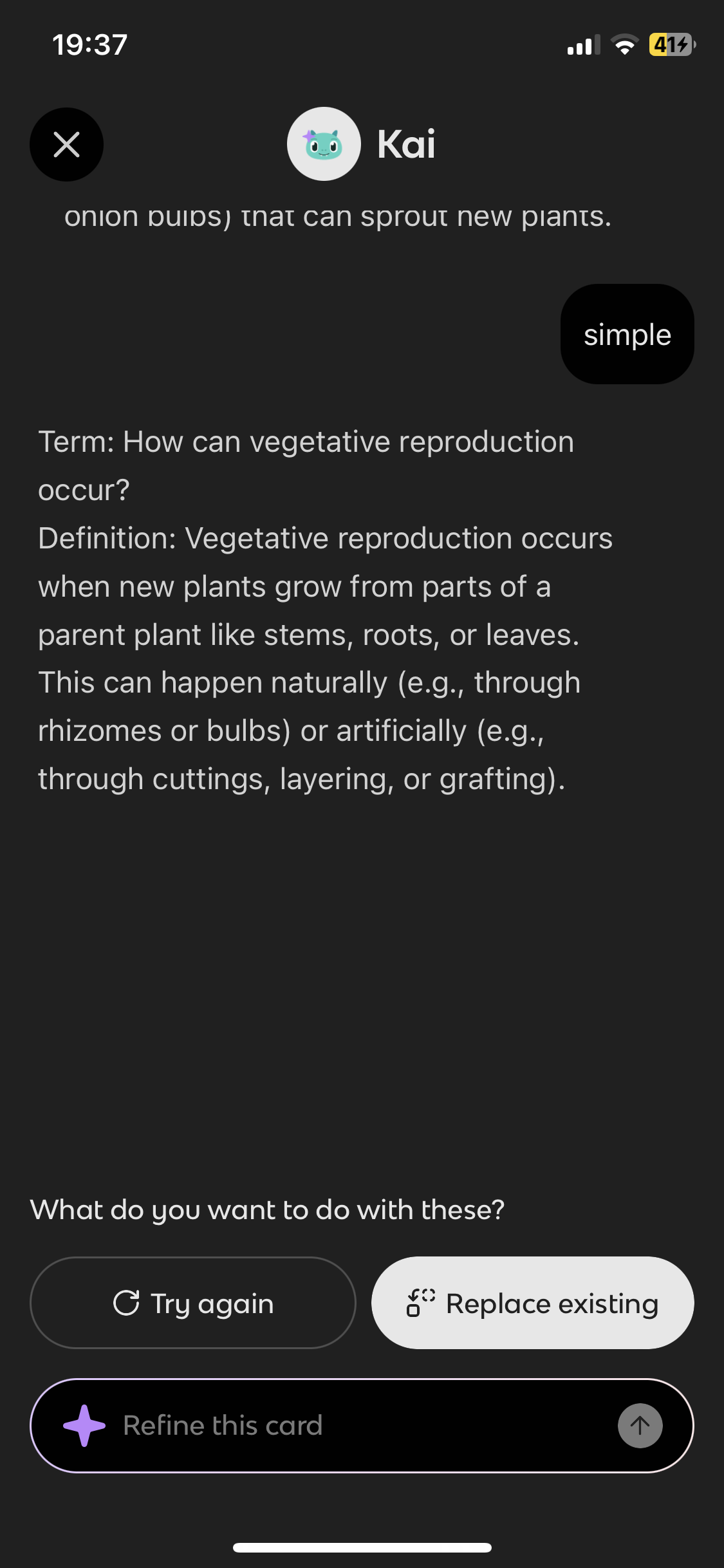Genetics and Inheritance Lecture Notes
1/51
Earn XP
Description and Tags
A comprehensive set of question-and-answer flashcards covering key concepts from Mendelian genetics, inheritance patterns, molecular genetics, biotechnology, cloning, and variation.
Name | Mastery | Learn | Test | Matching | Spaced |
|---|
No study sessions yet.
52 Terms
What does the field of Genetics study?
Heredity and variation in living organisms.
What is a Genome?
The complete set of genes that make up an organism.
Define Gene.
A segment of DNA on a chromosome that controls a specific characteristic or trait.
What is an Allele?
An alternative form of a gene found at the same locus on homologous chromosomes.
Define Locus.
The specific position of a gene on a chromosome.
What is a Dominant allele?
An allele that masks the expression of another (recessive) allele in the heterozygous condition.
What is a Recessive allele?
An allele whose effect is masked by a dominant allele in the heterozygous condition.
Explain Phenotype.
The observable physical and functional expression of a gene.
Explain Genotype.
The genetic makeup of an organism for a particular trait, represented by two alleles.
What does Homozygous mean?
Having two identical alleles for a characteristic (e.g., GG or gg).
What does Heterozygous mean?
Having two different alleles for a characteristic (e.g., Gg).
Who is considered the father of modern genetics?
Gregor Mendel.
State Mendel’s Law of Dominance.
In heterozygotes, one allele (dominant) masks the expression of the other (recessive).
State Mendel’s Law of Segregation.
Allele pairs separate during gamete formation so each gamete carries only one allele for each gene.
State Mendel’s Law of Independent Assortment.
Alleles of genes for different characteristics assort independently during gamete formation.
Define Monohybrid cross.
A genetic cross involving one gene and its alleles.
Define Dihybrid cross.
A genetic cross involving two genes located on different chromosomes.
What phenotypic ratio is expected when two heterozygous dihybrids (RrYy × RrYy) are crossed?
9:3:3:1 (round yellow : round green : wrinkled yellow : wrinkled green).
Describe Complete dominance.
One allele is dominant and fully masks the recessive allele in the heterozygous condition.
Describe Incomplete dominance.
Neither allele is completely dominant; the heterozygote shows an intermediate (blended) phenotype.
Describe Co-dominance.
Both alleles in a heterozygote are fully expressed in the phenotype.
Which blood group alleles display co-dominance?
IA and IB alleles (blood group AB).
Which allele is recessive in the ABO blood group system?
The i allele (blood group O).
What blood genotypes give blood group O?
ii.
Define Karyotype.
A complete diploid set of chromosomes arranged in homologous pairs by size, shape, and number.
How many chromosome pairs do humans have?
23 pairs (22 autosome pairs and 1 pair of sex chromosomes).
What sex chromosomes do males possess?
One X and one Y chromosome (XY).
What sex chromosomes do females possess?
Two X chromosomes (XX).
Who determines the sex of the human offspring?
The male, because his sperm can carry either an X or a Y chromosome.
Why are X-linked recessive disorders more common in males?
Males have only one X chromosome, so a single recessive allele on it is expressed without a dominant counterpart to mask it.
Why can’t fathers pass X-linked disorders to their sons?
Sons receive a Y chromosome from their father, not the father’s X chromosome.
What is a Carrier female in X-linked inheritance?
A woman with one normal allele and one recessive allele on her X chromosomes; phenotype normal but can pass the disorder.
What is the purpose of a Pedigree diagram?
To trace the inheritance of characteristics through multiple generations.
Define Mutation.
A permanent change in the DNA nucleotide sequence that may alter phenotype.
Define Biotechnology.
The manipulation of biological processes to satisfy human needs.
Define Genetic engineering.
The direct manipulation of an organism’s genes to obtain desirable characteristics.
What is a GMO?
A Genetically Modified Organism whose genome has been altered to express desirable traits.
List the basic steps of producing human insulin using recombinant DNA in E.coli.
Remove human insulin gene; cut bacterial plasmid; insert insulin gene into plasmid; form recombinant DNA; return plasmid to bacteria; culture bacteria to produce insulin.
Give two advantages of genetic modification in crops.
Higher yields and resistance to pests/disease.
State one common concern about GM organisms.
Potential unknown long-term health or environmental impacts.
What are Stem cells?
Undifferentiated cells capable of giving rise to any specialized cell type.
Name two sources of human stem cells.
Embryos and bone marrow (also umbilical cord/placenta).
Give one medical use of stem cells.
Regrowing or repairing damaged tissues.
Define Cloning (in animals).
Producing a genetically identical organism, often via somatic cell nuclear transfer.
Outline the main steps of somatic cell nuclear transfer.
Nucleus of ovum is removed; diploid nucleus extracted somatic donor cell; nucleus of donor cell placed in ovum to form diploid zygote;stimulate zygote to divide; implant embryo in surrogate.

Plants can be cloned by vegetative reproduction
Occurs when new plants grow from parts of parent plants like root, stems,leaves; can occur naturally or artificially

How genetic links occur
During fertilization, sperm cell discard tails that contain mitochondria; offspring get 100% of mtDNA from female
Give one potential benefit of vegetative reproduction
Conservation of threatened species.
State one argument against vegetative reproduction.
Reduction of genetic variation and possible unforeseen long-term effects.
What is Mitochondrial DNA (mtDNA)?
Circular DNA located in mitochondria, separate from nuclear DNA and inherited solely from the mother.
How is mtDNA useful in ancestry studies?
Its maternal inheritance pattern allows tracing lineage through the female line.
Differentiate Continuous and Discontinuous variation.
Continuous: traits with a range of phenotypes controlled by many genes (e.g., height). Discontinuous: traits in distinct categories controlled by one gene (e.g., blood group).